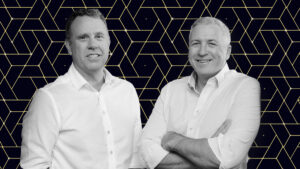Barry FitzGerald: Gold is erupting. Here’s how to invest in a volcano of it

Picture: Getty Images
Chasing a new geological concept in the exploration game more often than not leads to disappointment.
But when a well-researched concept comes up with the goods, there is cause for some genuine excitement.
The latter applies to North Queensland explorer Sunshine Metals (ASX:SHN) which announced a proof-of-concept exploration hit at its Liontown project near Charters Tower back on November 24. It was some hit too – 17m at 22.1 g/t gold from 67m.
The decision to target high-grade gold/copper in a particular setting where previous explorers had focussed on zinc-lead mineralisation had paid off.
Sunshine was a 1.1c stock beforehand and was promptly marched to as high as 3.6c as the market digested what the hit meant for the Liontown project and the broader region which, historically, is home to 20 million ounces of gold production and 14Mt of base and precious metals ore production from volcanogenic massive sulphide (VMS) deposits.
Sunshine has since settled back at 2.5c a share pending the release of assays results from another batch of holes drilled at Liontown aimed at finding more high-grade feeder zone gold. Still, the current share price amounts to market cap of $37 million, so the market is alert to Sunshine’s potential game-changing exploration.
Mining at Liontown actually started out in the early 1900s with a short-lived gold mining operation.
But the onset of the Second World War saw the focus shift to high-grade zinc and lead in VMS deposits rather than the gold and copper that came along for the ride when ancient volcanic vents on the then seabed deposited the mineralisation.
The various metals drop out in to different zones, with gold and copper typically concentrated in the central or feeder zone of the VMS system.
Sunshine boss Damien Keys told Garimpeiro that by diving in to Liontown’s geochemistry, the company had got a fix on where the hottest fluids in the system had come through which was now correlating to where “we are seeing bonanza gold and elevated copper in some of the samples as well.’’
“When the first hole came back with 17m grading 22g.1/t gold I would be lying if I said I wasn’t pretty pumped,’’ Keys said.
“We think previous explorers missed an opportunity which is fantastic for us.’’
“It is a great start for us and it also bodes well for the district when we spread our wings a bit further,’’ Keys said.
The current unknown is if the gold-rich feeder-zones will have scale to them.
“We have begun mapping out where the structure is heading and it looks like we can make a case to have at least two more of these zones we think are entering the system,’’ Keys said.
Sunshine was pretty pleased as it was when it picked up the Liontown ground earlier this year in a $3.25 million deal with the administrators of Red River, best known for its failed Thalanga zinc operation in the region.
The pick up came with a nice chunky VMS resource (5Mt at 12% recoverable zinc equivalent).
“We think we have picked up a fantastic orebody on the cheap,’’ Keys said.
The resource estimate is to be updated in the new year.
“So far we think it has been a great value adding acquisition. There is so much upside to the block, that’s for sure,’’ Keys said .
Despite the run up in the company’s market cap to $37 million, Keys reckons there is potentially more value add to come.
“Obviously on-going success will drive that but we didn’t really get an uplift on the Liontown acquisition alone as the market has been pretty ordinary all year for the juniors,’’ Keys said.
He said that as a result, the run up in the group’s market value in response to confirmation of the gold-rich feeder zone theory is just getting to what should be considered the company’s base value.
“We see a really bright future given the value proposition we have got in the tenements with a nice solid resource base, plenty of growth potential and obvious line of sight to where we are going to next to grow this resource,’’ Keys said.
“I am pretty excited for 2024. It will be a big year for us I think.’’
The views, information, or opinions expressed in the interviews in this article are solely those of the interviewees and do not represent the views of Stockhead. Stockhead does not provide, endorse or otherwise assume responsibility for any financial product advice contained in this article.
Related Topics

UNLOCK INSIGHTS
Discover the untold stories of emerging ASX stocks.
Daily news and expert analysis, it's free to subscribe.
By proceeding, you confirm you understand that we handle personal information in accordance with our Privacy Policy.








